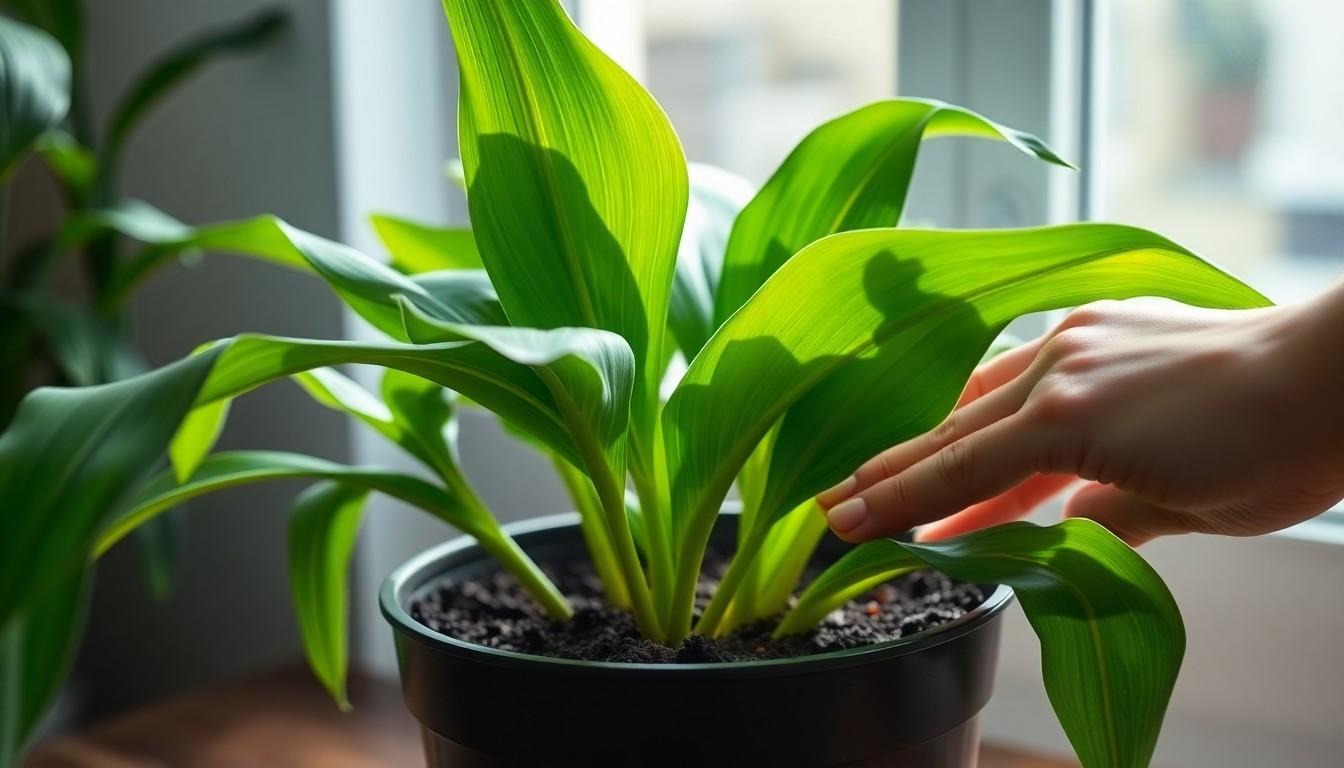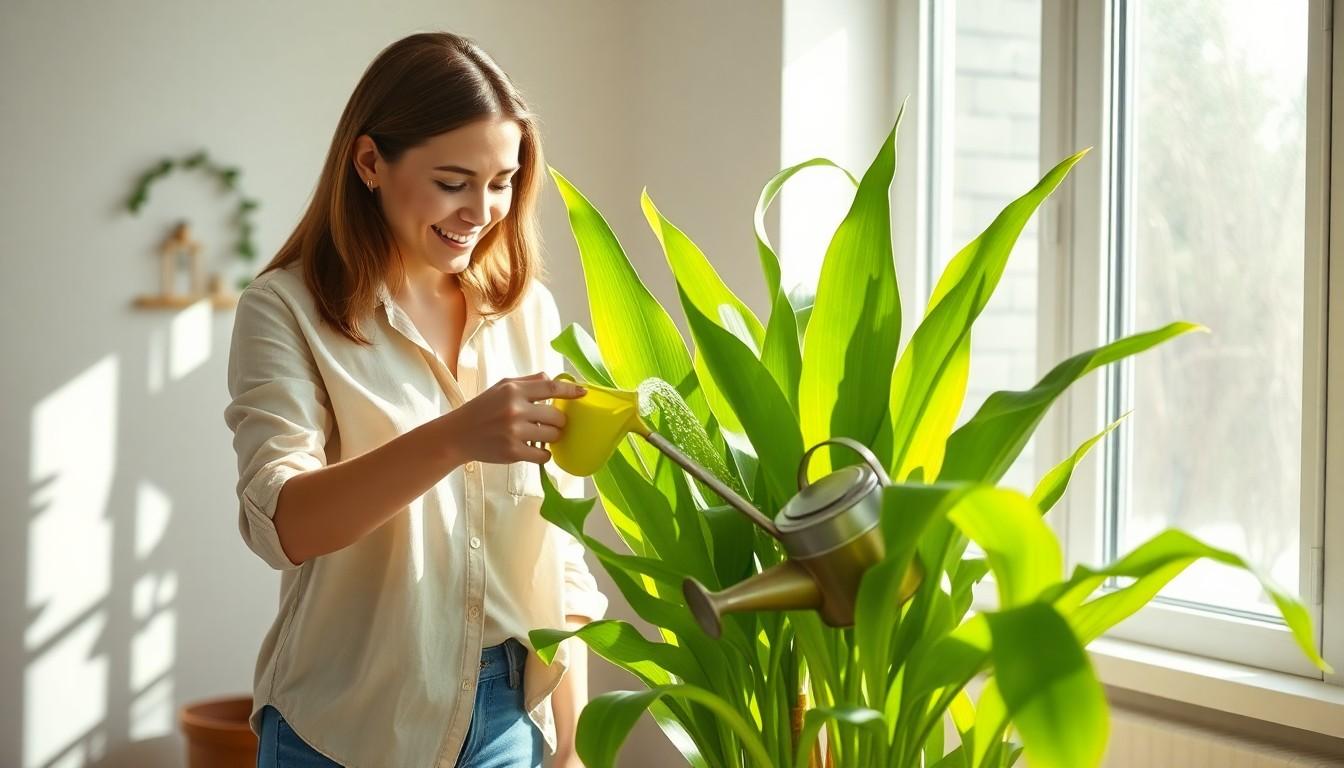If you’ve ever dreamed of channeling your inner plant parent without the hassle of a high-maintenance diva, the corn plant might just be your new best friend. With its lush green leaves and easy-going nature, this tropical beauty not only brightens up any room but also thrives on a little love and attention. Think of it as the low-maintenance pet you never knew you needed—no barking, no meowing, just pure leafy joy.
Choosing the Right Location
Choosing the right location for a corn plant is essential for its growth and vitality. Optimal placement ensures the plant flourishes and remains healthy.
Light Requirements
High light quality supports the corn plant’s growth. Bright, indirect sunlight is ideal, as it encourages lush foliage without causing leaf burn. Positioning it near a window with filtered sunlight helps maintain vibrant color. Avoid placing the plant in direct afternoon sunlight, as prolonged exposure can lead to damage. Regularly rotating the plant also promotes balanced growth and prevents leaning.
Temperature Considerations
Temperature plays a crucial role in the corn plant’s health. They thrive in temperatures between 60°F to 80°F. Protecting the plant from sudden temperature fluctuations contributes to its stability. Keeping it away from drafty windows or heating vents prevents stress. If conditions fall below 50°F, it may adversely impact the plant’s growth. Monitoring the temperature helps maintain an ideal environment for thriving foliage.
Watering Your Corn Plant

Watering plays a crucial role in maintaining the health of a corn plant. Proper moisture levels lead to vibrant foliage and overall vitality.
Frequency of Watering
Watering should occur approximately every 1 to 2 weeks, depending on the environmental conditions. Checking the top inch of soil is advisable; if it feels dry, it’s time to water. During warmer months, more frequent watering may be needed due to increased evaporation. Reduced watering may be necessary during winter when growth slows. Always use room temperature water to avoid shocking the plant.
Signs of Overwatering and Underwatering
Overwatering leads to yellowing leaves, wilting, and root rot. If the soil remains soggy for extended periods, the plant’s health declines rapidly. Underwatering, on the other hand, manifests through dry, crisp leaves and stunted growth. Leaves may also curl or droop noticeably. Regularly inspecting the plant’s condition ensures effective maintenance and allows for timely interventions.
Soil and Fertilization
Proper soil and fertilization play a vital role in the health of a corn plant. Choosing the right soil ensures the plant gets the nutrients it needs.
Best Soil Types
Well-draining potting soil promotes optimal growth for corn plants. A blend featuring peat moss and perlite enhances aeration and drainage. Alternatively, using soil formulated for houseplants provides sufficient nutrients. Maintaining a slightly acidic to neutral pH range (between 6.0 and 7.0) also contributes to overall vitality. Regularly checking for compaction will help ensure air circulation and moisture retention.
Recommended Fertilizers
Fertilizers with a balanced NPK ratio, such as 10-10-10 or 20-20-20, support healthy growth. Applying liquid fertilizers every 4 to 6 weeks during the growing season increases nutrient availability. Granular fertilizers can also provide slow-releasing nutrients over time. Reducing fertilizer application in the fall and winter months allows the plant to rest. Monitoring the plant’s response to fertilization ensures adjustments as necessary to promote optimum health.
Pruning and Maintenance
Pruning and maintenance are essential for keeping a corn plant healthy and vibrant. Regular care supports its growth and encourages bushier foliage.
When to Prune
Pruning should occur throughout the growing season. Spring and summer present ideal opportunities for this task. Newly developing leaves often benefit from routine trimming. Removing any dead or damaged leaves enhances overall appearance and promotes vitality. Regular assessments on a monthly basis ensure that the plant maintains its shape and health.
Techniques for Pruning
Using clean and sharp shears is critical for effective pruning. Start by cutting dead or yellowing leaves at their base. Focus on shaping the plant for a fuller appearance, trimming back straggly growth as necessary. Always cut at an angle to facilitate quick healing. Regularly cleaning tools prevents the spread of disease. Monitor the plant post-pruning for any signs of stress or shock. Through these techniques, the corn plant continues to thrive and flourish.
Common Pests and Diseases
Corn plants face a few common pests and diseases that can hinder their growth. Early detection plays a crucial role in managing these issues effectively.
Identifying Pests
Spider mites often appear as tiny specks on leaves and cause yellowing. Scale insects show up as small, hardened bumps on various stems and leaves, making plants look unhealthy. Mealybugs cluster in hidden areas and produce a cottony substance, indicating their presence. Aphids usually gather on new growth and may distort leaves by sucking sap. Regularly checking for signs of pest infestations ensures immediate recognition and appropriate action.
Treatment Solutions
Insecticidal soap proves effective against various pests. This product suffocates insects without harming the plant. Neem oil acts as a natural pesticide, disrupting the life cycle of pests. Hosing down the plant removes pests, especially spider mites and aphids. For severe infestations, systemic insecticides may provide deeper protection. Always follow application instructions carefully to avoid harming the plant while tackling these pests.
Conclusion
Caring for a corn plant is a rewarding experience that enhances any indoor space. With the right attention to light, temperature, and watering practices, it thrives effortlessly. Regular maintenance such as pruning and pest management ensures the plant remains healthy and vibrant.
By following these simple guidelines, anyone can enjoy the beauty and benefits of this resilient houseplant. A corn plant not only adds a touch of nature but also purifies the air, making it a perfect companion for any home or office. Embrace the joy of nurturing this low-maintenance plant and watch it flourish.

